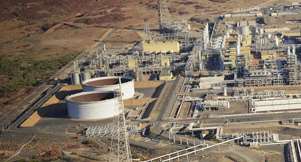Upstream gas producer Woodside Energy is looking to digital technology such as cognitive intelligence to help carve out a competitive edge, improve safety and reduce costs.
CIO Sara Braund told the ACS Reimagination 2015 conference that the company’s vision is to be “a global leader in upstream oil & gas” and that it would “leverage … core capabilities and the latest technologies to sharpen [its] competitive edge.”
Earlier this year, Woodside laid out an ambitious strategy that included creating a technology and innovation hub – recently rebranded FutureLab - that would bring together innovators from industry and academia to find ways to digitally disrupt the gas business.
While not specifically referencing FutureLab, Braund spoke about many of the program’s known work streams, providing an early indication of how the company is tracking.
One of the reasons that Woodside has chosen to disrupt itself is the risk of technology plateauing on its long lifespan projects, which can operate for several decades.
“In these time periods technology has changed immensely,” Braund said.
“However many of our facilities’ systems have not changed or been updated in that time.”
Braund sees technology as a way for Woodside to stand out as a “partner of choice” in the competitive liquefied natural gas (LNG) market.
She said the capital-intensive and high-risk nature of the resources sector meant Woodside typically sought out joint venture partners to offset project risk and share costs.
Becoming a leader in technologically-advanced operations could make Woodside more attractive to joint venture partners, particularly if those advancements create tangible competitive and commercial gains and improve safety.
One of the new models Woodside is testing is for support staff for its Karratha gas plant to be based some 1500km away in Perth.
“With regard to safety, technology has assisted us in reducing the number of people at site or on offshore facilities by providing remote support centres from our headquarters in Perth,” Braund said.
“Technology including collaboration software, smart boards and document cameras to share drawings have enabled us to mimic the control room in Perth to provide engineering and operational support on a 24x7 basis.
“It has assisted in reducing our operational costs by allowing us to respond quicker with the right people and expertise without flying to site.”
Woodside has also signed on to use IBM’s Watson cognitive intelligence platform.
“Over the years we have developed over 20 offshore facilities or gas plants. This has led to a lot of lessons learned,” Braund said.
“To assist in minimising development costs we are now utilising cognitive learning technology through the use of the Watson platform to digest our lessons learned from previous projects.
“By asking questions of Watson you can get answers to problems or issues immediately, whereas previously it was all about who you knew and whether they were still in the building.
“The use of Watson in the future will provide greater project delivery assurance and help us to reduce costs.”
Another area where Braund hopes technology will help carve out a competitive edge for Woodside is in equipment and plant maintenance.
“As a result of being an operator for over 30 years we’ve collected thousands of terabytes of instrument and sensor data [from our plants and machinery],” Braund said.
“To be honest we’ve done very little with this data to date, but what we are now doing is using advanced analytics software and tools combined with cloud compute power to predict events or failures that would lead to unplanned downtime in our facilities.
“We intend to move from a preventative maintenance model to a predictive maintenance model, and only do maintenance on equipment drifting out of calibration.”
The five E’s
Braund said that Woodside has adopted an innovation process that boils down to “the five E’s – envision, engage, evolve, evaluate and execute.”
To begin, IT must envision how technology or research can solve a business need.
“We then need to engage, collaborate and get closer to industry and the research institutes,” Braund said.
“We’ve set up a number of partnerships with universities all around Australia, including Curtin University and Monash University.”
With an idea ready and partners engaged, it became time to evolve the concept.
“Part of that is filtering and maturing the ideas, getting rid of the ones that - once you’ve talked to people - are just going to go absolutely nowhere.
“Then you need to experiment, test and trial. And once you’ve got something that is a winner, start scaling it up to deliver value to the business as quickly as possible.”
The process was about ensuring that all investments in technology remained grounded by the impact they would have for the business.
“There’s always a new shiny toy out there – brand new things in IT come about very quickly,” Braund said.
“We need to go with what will add value”.










